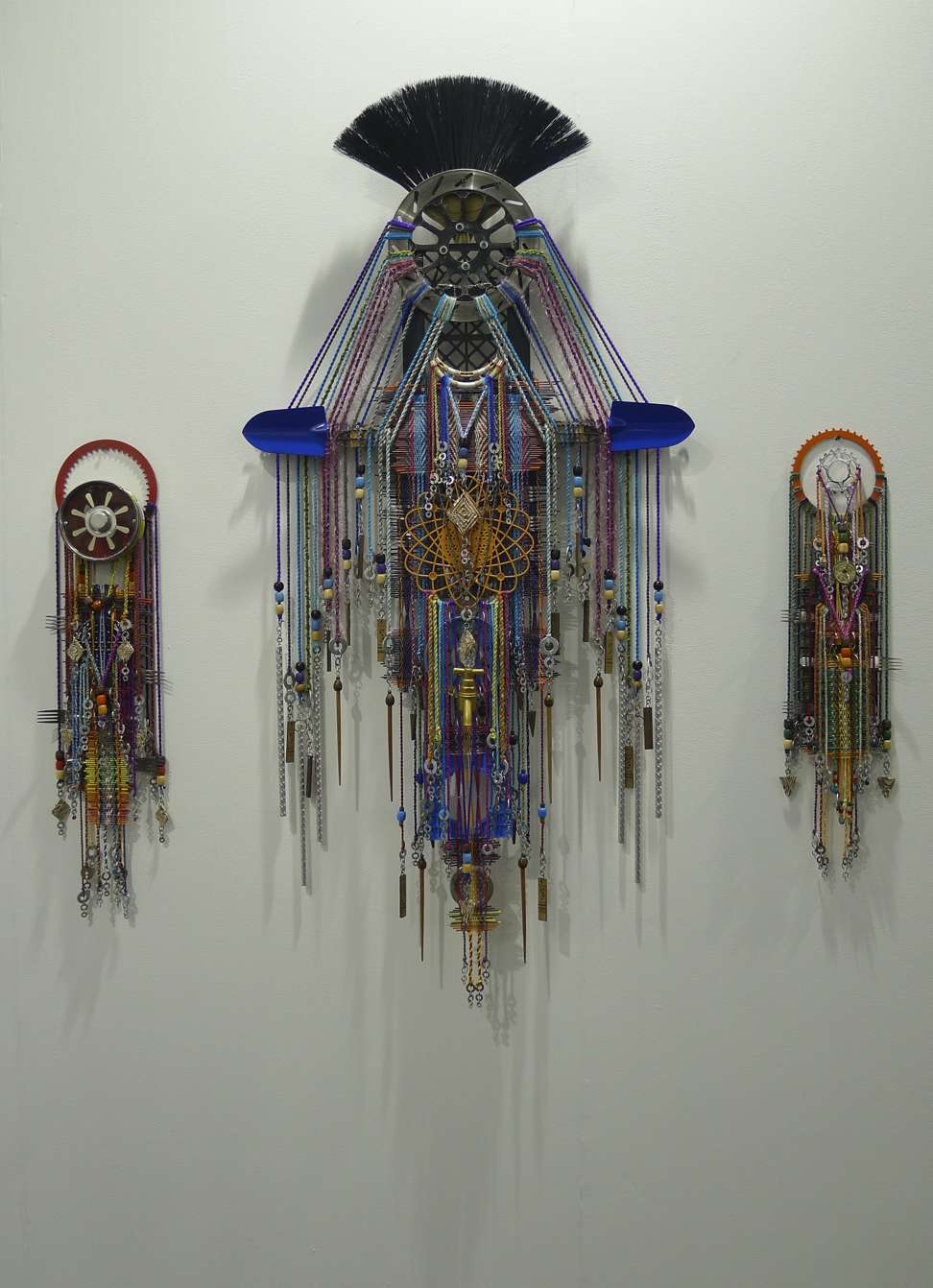
What’s caught our eye at Art Basel Hong Kong and Art Central
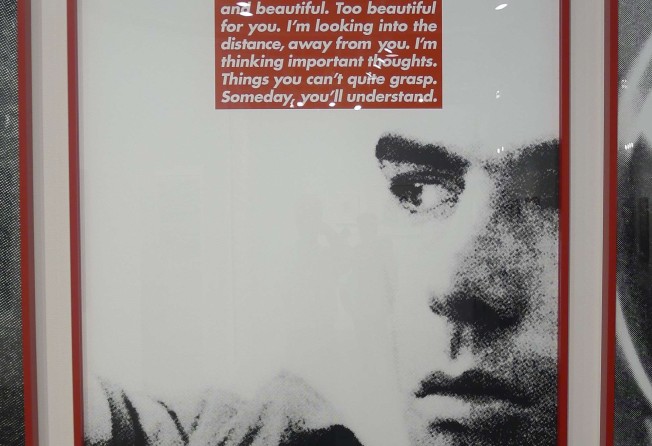
Art fairs of the calibre of Art Basel Hong Kong offer a unique opportunity to glimpse an annual overview of the worldwide art market and its interests.
However, fairs at this heady level rarely capture the world’s other concerns, largely forgoing contentious issues such as the rise of populism, Donald Trump and his policies, regional tensions, intolerance of refugees, terrorism, Brexit and a possible European Union breakup. None of these were much glimpsed around Art Basel’s exhibition halls.
Art Central, in a large tent on the Central reclamation, has fewer pretensions, and, though much of the art was decorative, offered glimpses of political and social concern in its organised talks and performances.

Chinese University fine arts teacher Frank Vigneron’s continuing series of geometric drawings were presented as beautiful three-panel retablos at Lucie Chang’s booth.
A subtle public space intervention was New Zealander Glen Hayward’s Everyday People, presented by Paul Nache Gallery and featuring hand-carved wooden snails and nails “hammered” into a corridor wall, creating an incongruous but pleasing perspective as people passed by.
Over at Art Basel, Asia Art Archive strove to display one source of artistic endeavour. One hundred artists were asked to name a book that was an inspiration for their work. Philosophy and art theory books led the choices.
However, South Korean collective Young-Hae Chang Heavy Industries gave a tongue-in-cheek answerby nominating Dale Carnegie’s How to Win Friends & Influence People. They realised that all of the qualities Carnegie identifies to be successful – being positive, pleasant, conversational and agreeable – were those they did not have, and “that’s when it hit us that we had all the failings – sorry, qualities – necessary for the life of the artist”.
The book and literary theme continued throughout the art fair.
At Goodman Gallery, South African William Kentridge’s short stop-animation video Soft Dictionary saw him flipping through an old dictionary featuring his characteristic hand-written text and drawings, with word plays. “Slaughter”, for instance, morphs a few pages later to “laughter”; likewise “s/mother”. Images of African dictators flash on screen, significant dates are noted, Mao Zedong and Deng Xiaoping appear. The video is a 164-second summary of the significant influence of the 1960s Maoist revolution in Africa, now replaced by the soft power of Chinese investment.
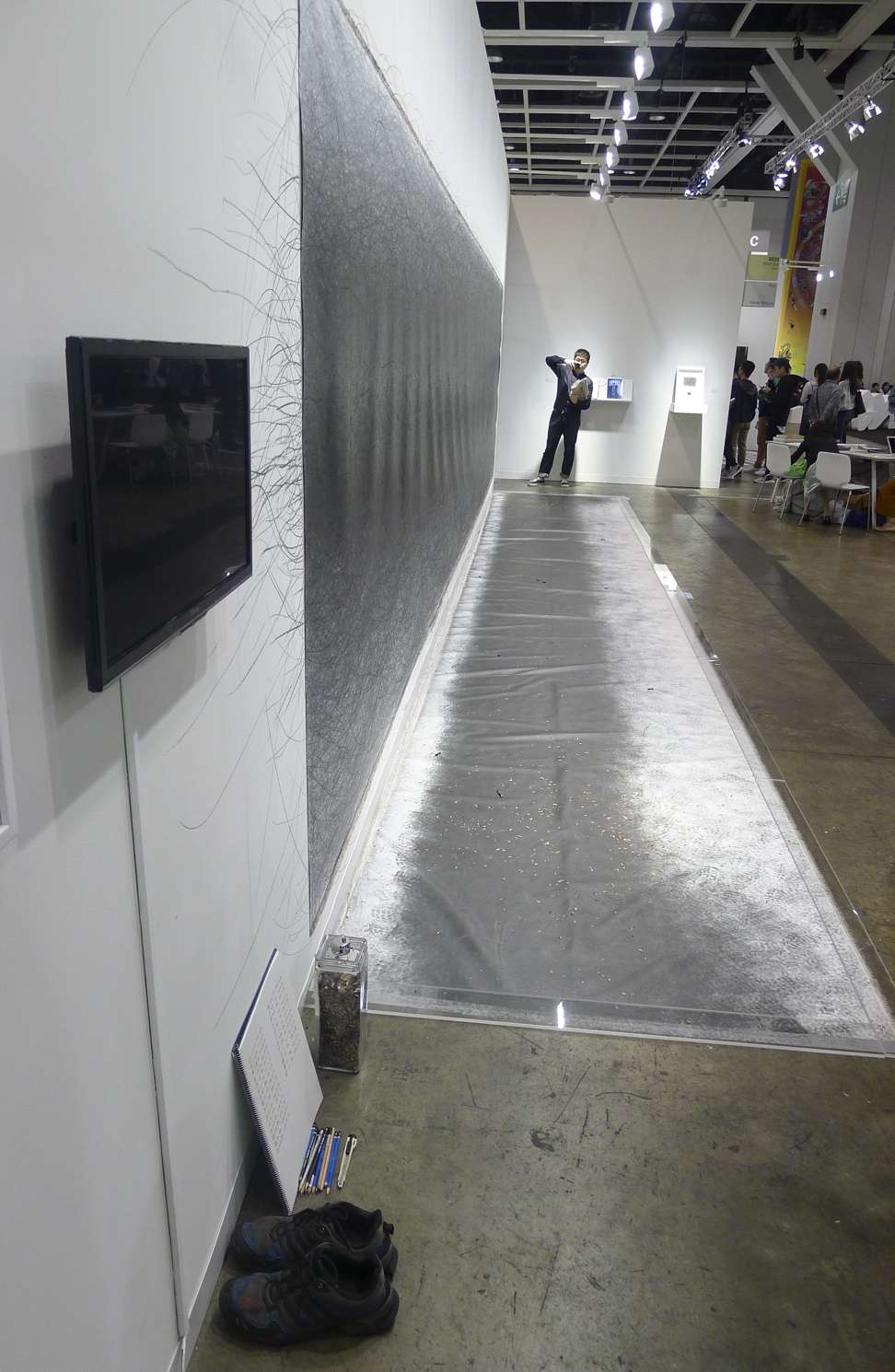

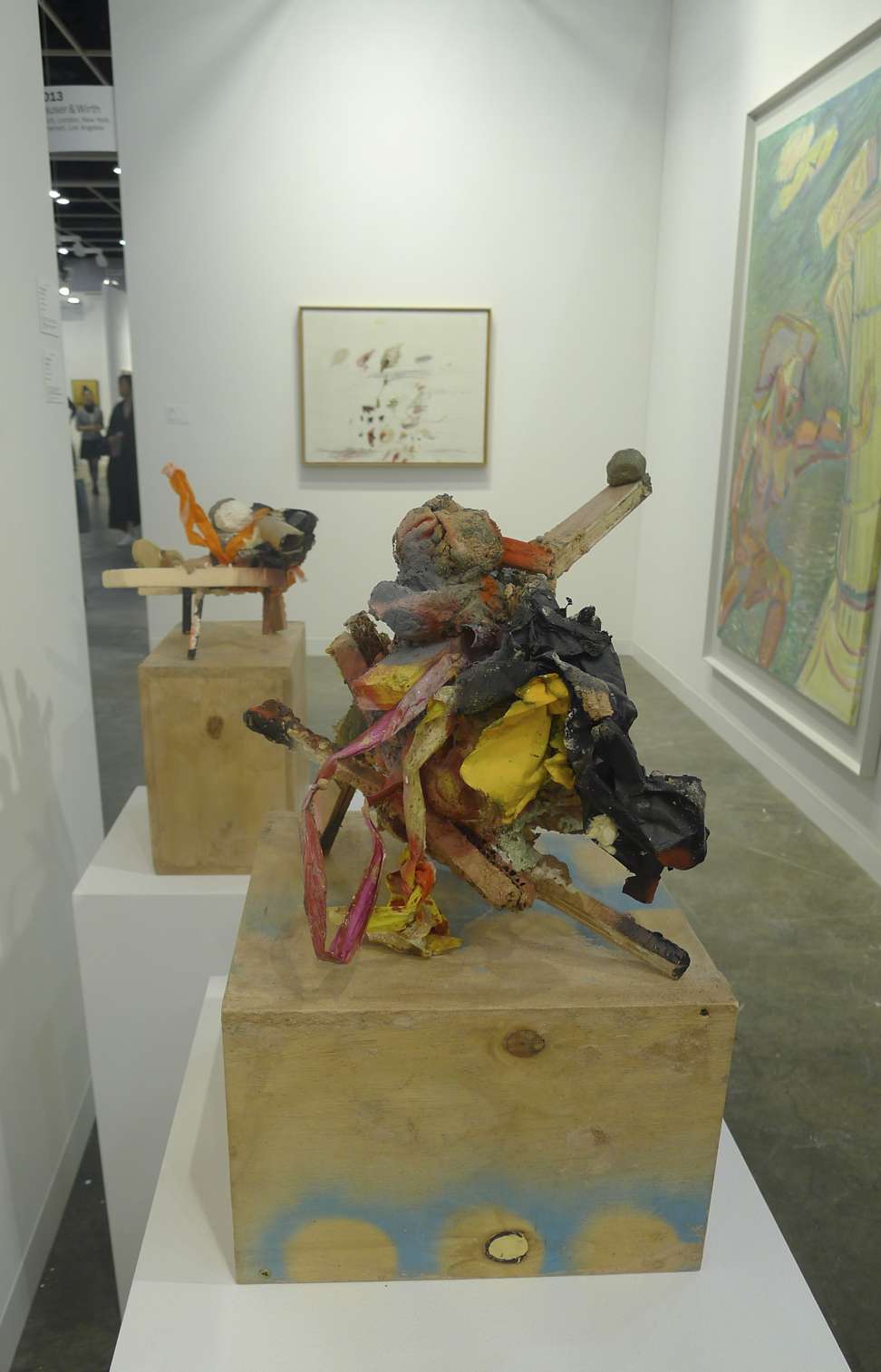
Galerie du Monde showed an excellent overview of the Fifth Moon Group of modern Chinese ink painters, led by Liu Kuo-sung and featuring a refreshing display of historical photographs and memorabilia of these modern artists.
Known for its decades-long support for landscape ink painting works, Hanart TZ Gallery intentionally presented a booth of landscape paintings featuring other media. Emily Cheng’s acrylic paintings include chakra and meridian lines in abstracted landscapes, serving as delicate cosmic interpretations of the physical world. Feng Mengbo uses the unusual combination of tempera and digital imagery, replete with cracks, to build conventional landscape-genre paintings.
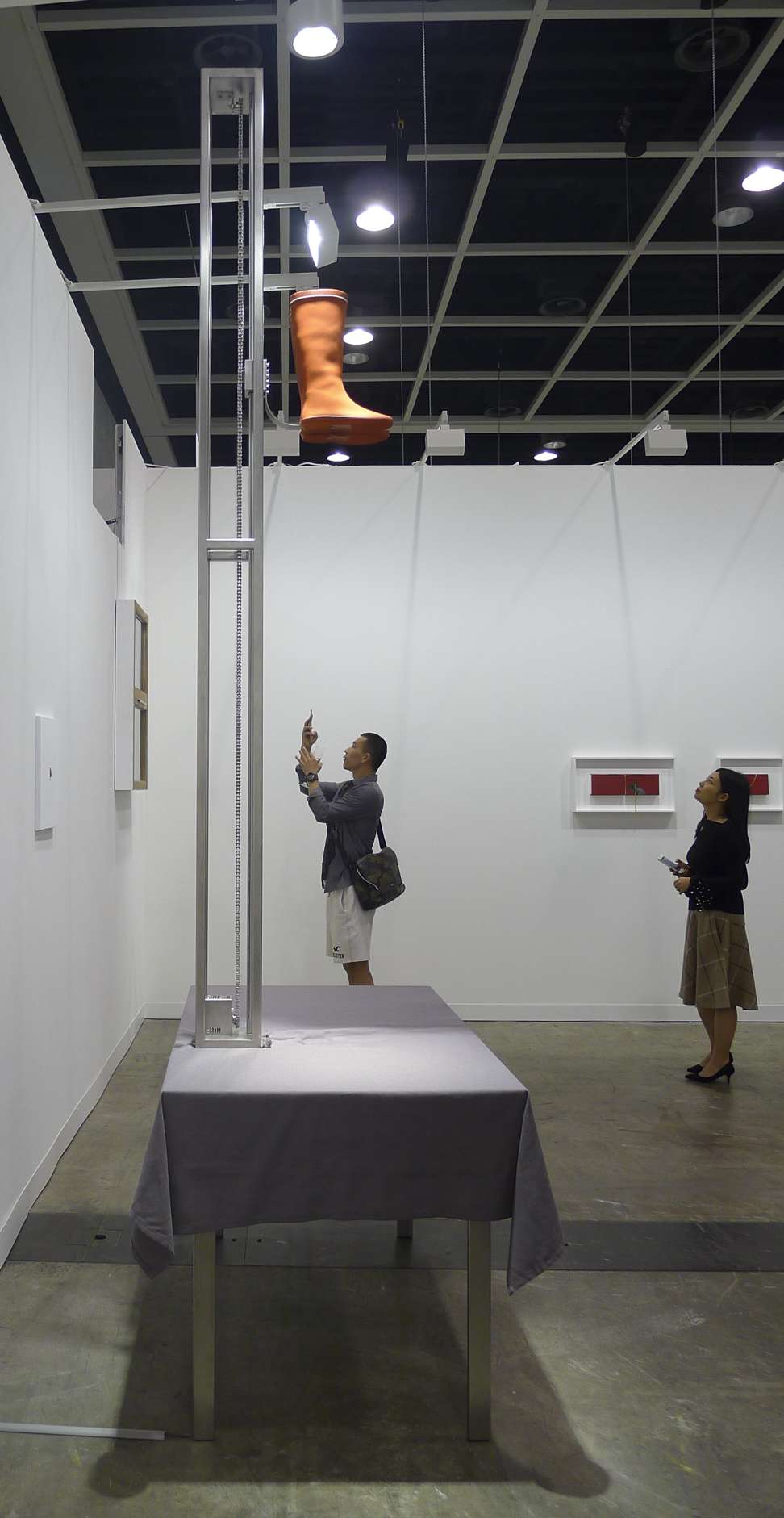
Photography was not as prominent this year, but Naoyoshi Hikosaka’s photographic documentation of his 1970 latex-paint pouring performance Floor Event No 1, shown at the booth of Misa Shin Gallery, was a fascinating slice of significant performance history. Hikosaka poured latex over the tatami floor of his apartment and continued living there over the following 10 days as it dried. These photographs document the original performance, which was repeated in other settings during the ’70s.
As people leave Art Basel, they pass the Trade Development Council’s Design Shop, in whose windows are a series of photographs titled “Stylish Hong Kong”, with such captions as “High-level view of Hong Kong from Prince’s Building”. Reality hits a few steps farther: the doors to Immigration Tower are closed, and a line of sitting domestic helpers start to queue for the overnight wait to secure a next-day immigration appointment. With a blink of the eye, they could Syrian refugees, or from anywhere, awaiting an asylum interview.
Fortunately, artists can be critically cutting of themselves and the illusion of pretension, promotion, marketing, advertising – all that an art fair embraces. They’re illusions we all inhabit alongside the stark realities of life.
In American Barbara Kruger’s Untitled (Project for Dazed and Confused), she cuts to the core, with text on the piece stating, “I’m very serious. I’m brilliant and beautiful. Too beautiful for you. I’m looking into the distance, away from you. I’m thinking important thoughts. Things you can’t quite grasp. Someday, you’ll understand.”